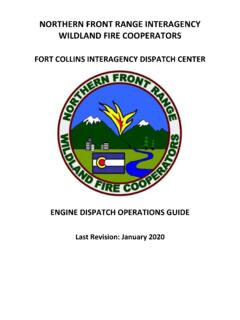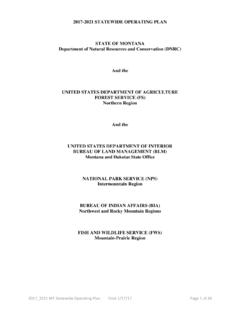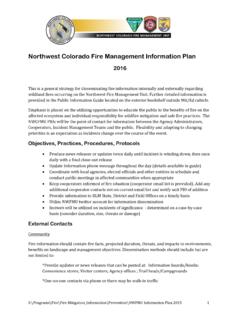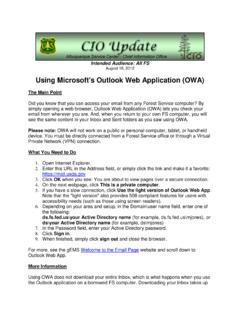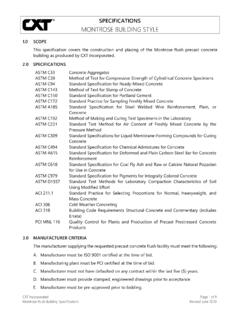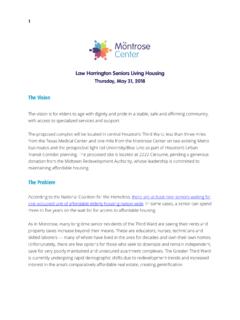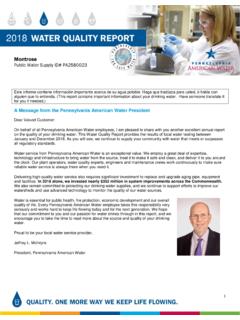Transcription of Montrose Interagency Dispatch Center
1 Montrose Interagency Dispatch Center 2007 Year End Report The Montrose Interagency Fire Management Unit (MIFMU) experienced a very mild fire season during 2007. Predictions for an active fire season in western Colorado did not materialize, as fuel conditions remained near average, and the hot and dry weather produced fewer than usual thunderstorms. For the second year in a row, fire occurrence and numbers of acres burned were below annual averages for the unit. In preparation for the 2007 season, a major milestone was accomplished with the approval of Wildland Fire Use (WFU) as a fire management strategy on lands administered by the Grand Mesa, Uncompahgre, and Gunnison National Forest (GMUG).
2 During the winter months, an inter-disciplinary team developed a proposal to amend the Fire Management Plan to include WFU in areas identified where naturally occurring wildfires would provide resource benefits. A significant effort was made to incorporate existing Bureau of Land Management and National Park Service plans for WFU into a unit-wide project that could be implemented across the entire MIFMU. The Forest Leadership Team approved the amended Fire Management Plan, and a media information and community outreach program was undertaken to educate and prepare the public for the implementation of Wildland Fire Use as an Appropriate Management Response (AMR). In late June, a lighting strike ignited a small fire in the Cochetopa Hills, and the Lujan Ridge fire became the first WFU on the GMUG National Forest.
3 Over a period of several weeks, the fire made runs of varying size and intensity, resulting in a beneficial mosaic burn pattern on 52 acres of decadent spruce, fir, and bristlecone pine. The Lujan Ridge fire provided fire management and resource staff an excellent opportunity to implement the WFU program, and this experience was applied to three other WFU candidate fires during the remainder of the season. All of the Ranger Districts on the GMUG, except for Paonia RD, which did not have a candidate fire start, had the opportunity to manage a WFU fire this summer. While there was no subsequent growth on either the Sawmill Mesa or Traver Mesa fire starts, the Hauser WFU fire was a late season event on the Uncompahgre Plateau that achieved excellent fire effects on 41 acres of ponderosa pine, gambel s oak, and serviceberry.
4 In addition, the Section 28 fire on BLM land southeast of Nucla was successfully managed as WFU incident on 135 acres of pinion pine, juniper, and sagebrush fuels. Incident complexity required additional resource commitment due to adjacent private lands, and high visibility to several nearby communities. An agreement was signed with a landowner that allowed the Section 28 fire to burn onto their property, providing resource benefits to both private and Federal lands. As the monsoon rains arrived, MIFMU resources were mobilized to assist with the large fires burning in Nevada, Idaho, Montana, Wyoming and South Dakota. When the suppression resources returned from these assignments, preparation for the fall prescribed burning season began.
5 Beginning in early September prescribed burns were conducted across the unit, and a good portion of the Interagency target was accomplished. The Sand Mountain Rx burn was finally completed, when near-perfect weather and fuels conditions presented an opportunity after several years of uncooperative weather patterns. The cover photo for this report was taken by Jeff Davids, during black-lining operations on Sand Mountain. Montrose Interagency Fire Management Fuels Management Accomplishments Over 11,000 acres of fuels were treated with Wildland Urban Interface and Hazardous Fuels funding in the Montrose Unit. Both prescribed fire (5,300 acres) and mechanical treatment (6,471 acres) were used across the unit by USFS and BLM.
6 Mechanical treatments ranged from chainsaw/hand piling to fecan flail, hydroaxe and roller chop treatments. Prescribed burning occurred in fuel types as diverse as grass/sage, sage/pinyon-juniper, oakbrush, slash (roller chops), ponderosa pine understory, and piles. Due to significant fall moisture (3-6 in 30 days between 9/16 and 10/16) the fall prescribed burn window was marginal and subsequently not all projects were completed/initiated. In addition, in the Uncompahgre Field Office many of the targeted prescribed burn projects are becoming infested with cheatgrass, partially as a response to significant spring/fall moisture the past 2 years and partly due to the earlier mechanical disturbances.
7 Office Totals Prescribed Mechanical Total Acres Gunnison Ranger District 2614 1277 3891 Norwood Ranger District 463 460 923 Paonia Ranger District 1174 0 1174 Ouray Ranger District 220 2506 2726 Uncompahgre Field Office 568 1589 2157 Gunnison Field Office 261 639 900 Unit Totals: 5300 6471 11771 Agency Totals US Forest Service 4471 4243 8714 Bureau of Land Management 829 2228 3057 Unit Totals: 5300 6471 11771 Within the Unit 2-3 new Firing Bosses were qualified through the taskbook process, maintaining the total number of Ignition Specialists at approximately 15. 3-4 personnel became single resource qualified and will now be able to serve as Holding Specialists and Firing Boss Trainees in FY07.
8 The qualified firing Bosses received significant amounts of experience and 3 of them are now pursuing Burn Boss qualifications. 0500100015002000250030003500 NorRDPaoRDOurRDGunRDUncFOGunFORxMx010002 0003000400050006000 USFSBLMRxMx Community Assistance/Mitigation and Education Program Montrose Interagency Fire Management Unit 2007 Community Assistance: The MIFU distributed $60,000 in community assistance to the West Region Fire Council under the leadership of Jennifer Dinsmore/San Miguel County. Delta County $10,000 Ouray County $5,000 San Miguel County $25,000 Telluride FPD $20,000 $60,000 The major accomplishments in Community Assistance for the year were to begin work on four CWPPs, all of which are near completion: Delta County: Hotchkiss Fire District, Ouray County: Horsefly Fire Protection Association, Cornerstone Association, and Four Communities in Ouray County (Lake Lenore, Whispering Pines, Panoramic Heights, Dexter/Cutler).
9 Delta County completed the GPS and structure evaluations in the Cedaredge area and are now working to complete another section of Delta County. Montrose County is still trying to start their GPS and structure evaluations. San Miguel County has revised their County Fire Plan and is preparing to contract to have a county-wide CWPP written. The Telluride Fire Protection District is installing 5 dry hydrants in outlying areas surrounding Telluride. Another accomplishment was to help film, edit and produce a video on CWPP planning in conjunction with Ouray County/Horsefly. Education/Outreach: The major accomplishments for the year were to complete the Why the Smoke prescribed fire brochures, write 2 Snapshot articles, and handle some media stories o 3 Why the Smoke Brochures for Ouray/Norwood/Gunnison Zones o 2 Snapshot articles (CWPP video/fuels treatments on Section 28 fire) o KVNF talk show/DCI article/Telluride Watch article o 2 meeting with Telluride Institute/SMWC educational coordinators to share PLT teaching materials and discuss Fire Ecology Institute Collaboration.
10 The major accomplishment for the year was to develop a Joint Fire Science Project (JFSP) pre-proposal with Chris Stalling/Rocky Mountain Research Station to do research on public input for the Uncompahgre Plateau Project planning process. Another accomplishment was to present on collaboration at the M-580 (FIEM) class. o Met with UP technical committee to propose the research project o Worked with Chris to write the pre-proposal o Worked with Jimmy Chew/RMRS to provide data to them to model in SIMPPLLE Fire Planning: The major accomplishments for the year were to assist the GMUG in developing a Forest Plan Amendment to allow for WFU and writing a section of the Environmental Assessment.


